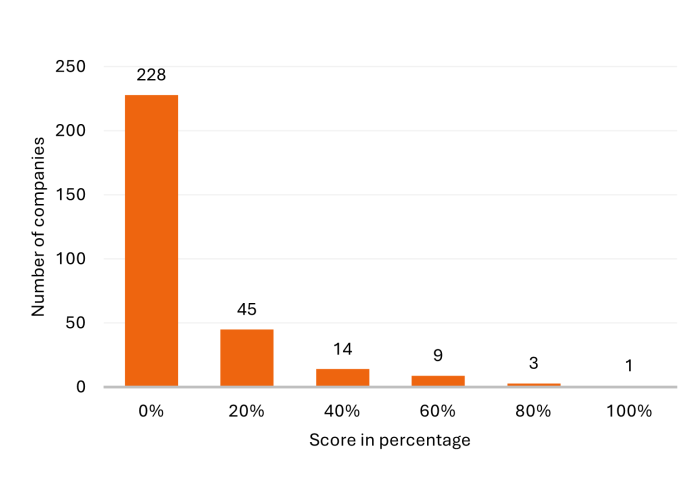Key finding
Despite billions facing a cost-of-living crisis, affordability does not factor into the sustainability agenda for 75% of urban companies
Despite contributing directly to the cost-of-living crisis affecting billions, 75% of urban companies fail to tackle affordability
Authors: Hannah Itcovitz and Besmira Dyca
Cities around the world are becoming increasingly unaffordable, particularly in the Global South. In major Sub-Saharan cities like Nairobi, rent-to-income ratios have reached 311%, pushing many into informal housing and preventing access to critical infrastructure, services and job opportunities. In Asian megacities like Mumbai (Praja, 2014) and Metro Manila (Ballesteros, Ramos, & Ancheta, 2024), rising house prices have led to extreme overcrowding and inadequate housing quality. At the same time, global consumer price inflation peaked at 9% in 2022 (ILO, 2022), and 3 out of 4 consumers remain concerned about the rising cost of everyday expenses like food and energy (Euromonitor International, 2024).
Numerous studies show the link between affordability and development outcomes, including water and energy poverty, overcrowding and informality, and nutrition and health, with low-income households suffering the most (Habitat for Humanity, 2021). In 30 years, unaffordable housing will push an additional 2 billion people into living in slum-like conditions in cities, adding to the 1 billion already living in such environments (United Nations, 2023). This makes SDG11 one of the slowest-progressing goals (WEF, 2023) and underscores the critical role of affordability in reducing inequalities.
Over the last decades, a growing number of countries worldwide (Estache, Gomez-Lobo, & Leipziger, 2001) have implemented housing, transport and utility sector liberalisation policies, increasing private sector involvement in housing and service provision. The 2024 Urban Benchmark assessed 300 companies that are the main providers of at least one key urban service — utilities, transport, real estate or construction — in megacities worldwide. Collectively, the 50 energy companies and 30 water companies in the benchmark service 2.5 billion and 850 million people, respectively. Their pricing decisions directly determine access to affordable housing and basic services for millions, making them a key actor in addressing the global cost-of-living crisis.
Urban companies rarely address affordability — and few stakeholders ask them to
The majority of companies in the benchmark did not identify affordability as a significant sustainability issue or priority in their disclosures, with over 75% scoring zero across all five elements of the affordability indicator.
Regions experiencing the fastest rates of urbanisation and informality show the poorest performance
The assessment found that two in five companies headquartered in Europe and North America disclosed actions to improve affordability, compared to just one in ten across East Asia, Latin America and Sub-Saharan Africa. In Sub-Saharan Africa, formal housing is unaffordable for over 85% of the urban population (Kukopa, 2024).
Lessons from the top performers
Twelve of the 13 companies that score above 50% on affordability in the benchmark are utilities, particularly those headquartered in Brazil, France and the UK.
Making affordability a reporting and regulatory priority
There is an urgent need for standard setting bodies such as GRI and SASB to embed affordability in their reporting frameworks and develop a common reporting approach with clear, industry-specific metrics and definitions of affordability to allow for comparability and progress tracking.
Bibliography
Ballesteros, M. M., Ramos, T. P., & Ancheta, J. A. (2024). Measuring Housing Affordability in the Philippines. Philippine Journal of Development.
Estache, A., Gomez-Lobo, A., & Leipziger, D. (2001). Utilities Privatization and the Poor: Lessons and Evidence from Latin America. World Development, 29(7), 1179-1198.
 Figure
Figure  Figure 2: Affordability scores across 300 Urban companies
Figure 2: Affordability scores across 300 Urban companies